Discover Florida Nature
It's time to explore the natural Florida


|
|
||
|
||
|
Florida has more species of non-venomous snakes than any other state
east of Texas, a total of 37 different species. Florida's non-venomous
snakes come in a great variety of size and colors and are found in all
Florida habitats from mangrove swamps to the driest scrub, from
limestone spring runs to the Everglades, and even the backyard. Along with spiders, snakes suffer more human misunderstanding than any other animals. Snakes are feared in part because of the very few species which are actually dangerous and in part because of ignorance about their mysterious ways The snake skeleton consists of hundreds of vertebrae joined together by special connectors in addition to the normal ball and socket joints which provide flexibility. When a snake eats a large meal, the thin skin between its hard scales stretches to allow great expansion of its body. A snake's skeleton can accommodate this expansion because snakes do not have the restrictive bone of humans such as the breast bone or the pelvic girdle. The motion of snakes has always been a mystery. Part of the confusion is that snakes have several ways of propelling themselves. The best known method is called serpentine motion or lateral undulation, and is the familiar S curve crawl. By applying pressure against irregularities on the ground from various points along its long body, a snake almost magically converts side to side motion to forward movement. However, on a smooth surface where a snake cannot get good traction, it will writhe vigorously with little forward movement. All snakes can swim and they use of the S curve movement to propel themselves through the water. A snake can also move by first anchoring its front belly scales into the ground or another surface, bunching up its loose skin so that the skin slides forward long the the body, anchoring its rear scales, and then sliding its body forward within the skin. Other kinds of movement include a back to front rippling motion, much like a caterpillar, and a side-winding movement used by sidewinders and the Florida Hognose Snake. |
||
 Atlantic Salt Marsh Snake Atlantic Salt Marsh Snake
 Black Swamp Snake Black Swamp Snake Bluestripe Garter Snake Bluestripe Garter Snake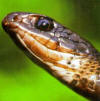 Brown Chinned Racer Brown Chinned Racer Brown Water Snake Brown Water Snake  Crown Snakes Crown Snakes Eastern Coachwhip Eastern Coachwhip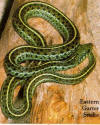 Eastern Garter Snake Eastern Garter Snake Eastern Hognose Snake Eastern Hognose Snake Eastern Indigo Snake Eastern Indigo Snake
 Eastern Mud Snake Eastern Mud Snake Everglades Racer Everglades Racer Florida Brown Snake Florida Brown Snake
 Florida Kingsnake Florida Kingsnake Florida Pine Snake Florida Pine Snake  Florida
Water Snake Florida
Water Snake Glossy Crayfish Snake Glossy Crayfish Snake |
 Mangrove Water Snake Mangrove Water Snake Pine Woods Snake Pine Woods Snake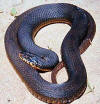 Plainbelly Snake Plainbelly Snake Rainbow Snake Rainbow Snake Rat Snake Rat Snake  Red Rat Snake
(Corn Snake) Red Rat Snake
(Corn Snake)  Redbellied Snake Redbellied Snake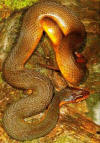 Redbelly Water Snake Redbelly Water Snake
 Ribbon Snake Ribbon Snake  Rough Green Snake Rough Green Snake Scarlet Kingsnake Scarlet Kingsnake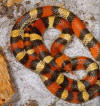 Scarlet Snake Scarlet Snake  Short Tailed Snake Short Tailed Snake  Smooth Earth Snake Smooth Earth Snake Southern Black Racer Southern Black Racer Southern Hognose Snake Southern Hognose Snake Southern Ringneck Snake Southern Ringneck Snake Striped Crayfish Snake Striped Crayfish Snake |
|
|
Advertise | Privacy Statement | Dog Encyclopedia | Video |Contact | Alaska Nature |
||